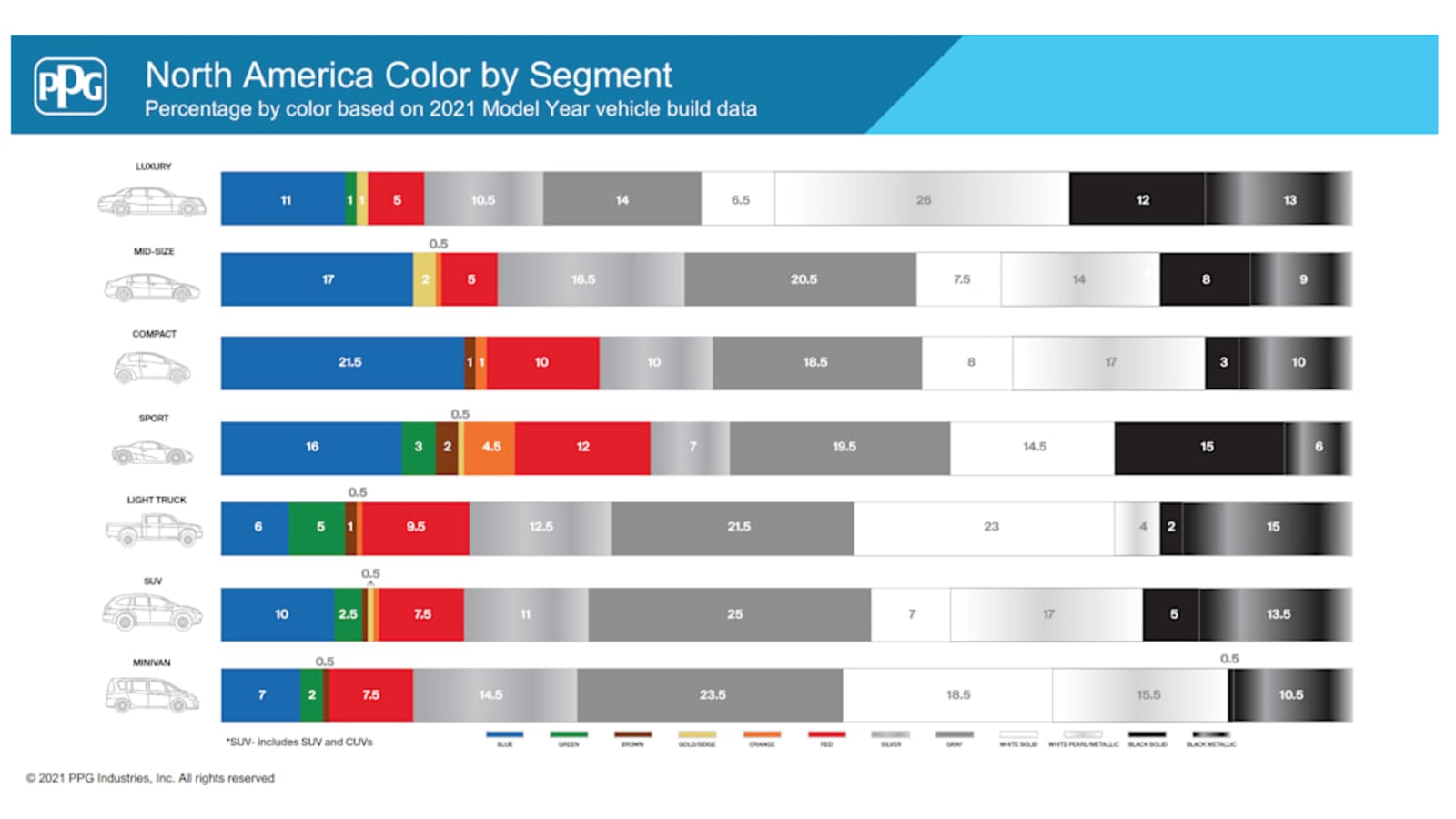These are the car colors that depreciate the least

This may not be the first time you’ve heard this tidbit, as it has been showing up in sales data for years now, but the folks at iSeeCars just came out with their latest analysis of car colors as a factor in vehicle depreciation. Some 650,000 vehicle transactions were number-crunched to determine that the best color for resale value is … drumroll, please …
Yellow.
Followed by orange.
Followed by purple, red and green.
Wait, you say, those are all actual, vivid colors. This finding flies in the face of consumer behavior, as the vast majority Americans buy cars that are white, black, gray and silver — or as we like to call it here at Autoblog, the “German rainbow,” since those are the paint jobs you most likely see on a BMW or Mercedes. Together, those four non-colors made up 78% of vehicle sales in 2021.
Here’s iSeeCars’ overall depreciation breakdown. Clearly, the wrong car color can cost you thousands of dollars on resale:
So why is it that the grayscale paints that are popular among new-car buyers are not the colors that are valued in resale? Well, that question kind of answers itself — it’s basic supply and demand.
Bright colors are unpopular for new cars — or rather, they may simply be unavailable. Dealers tend to carry inventory in colors that seem “safer” to sell. It’s a lowest-common-denominator situation. Gray will sell if gray’s mostly what you offer.
“Many consumers choose these grayscale colors not because they like them, but because they assume everyone else does,” said iSeeCars’ executive analyst Karl Brauer. “Because these are the most common colors, they aren’t in short supply, and choosing these colors won’t help or hurt resale value much.”
So it follows that in the used-car market, yellow, orange and rest of the Skittles bag are rare — and therefore more valuable. You want a gray used car? That’s easy, there’s a million of ’em. You want a yellow car? Supplies are limited.
Or as Brauer put it: “Yellow and orange are not necessarily popular colors with a wide spectrum of car buyers. But they are very popular in some vehicle segments, and there is more demand for these colors than supply because relatively few new-car buyers choose yellow and orange. Like everything in a free market, price is determined by the intersection of supply and demand, and the supply of yellow and orange cars is too low to meet the demand for them, giving those colors an advantage in terms of resale value.”

As Brauer notes, yellow and orange are more popular in certain vehicle segments, especially the sportier ones, as demonstrated in the chart above. Ikazuchi Yellow is going to be the “it” color for a Nissan Z, and Ford Mustangs have been offered in orange for decades. You can go to iSeeCars’ report to see the segments broken down in more detail. But to summarize:
Yellow holds its value best among SUVs. (To the point about scarcity, you don’t see many yellow SUVs.) This segment’s buyers are down on brown, which also came in dead-last on the overall depreciation rankings.
In pickup trucks, beige is tops, which is interesting because beige fares poorly in other segments. But colors like Toyota’s Quicksand Beige have a rugged appeal. Orange is also good. Green’s the worst here, maybe because you wind up looking too much like a parks department work truck.
Purple is the color of royalty, and it reigns supreme and super-rare among sedans. Black fares the worst.
Convertibles are best in yellow, green, orange, red, blue. Black is again the bottom-dweller.
Orange is best in coupes. White is blah.
Green minivans hold their value best. Interestingly, this is the only category where red ranks poorly. Dead last, in fact.
Personally speaking, as someone who owns an orange Mustang, these are completely understandable findings — people are interested in it and strike up conversations about it everywhere it goes, which surely would never happen if the car were gray.
Also, one aspect not often discussed is the safety advantage of a highly visible color: A gray or silver car can be easily overlooked on gray pavement, on an overcast day or during inclement weather. Thank goodness for daytime running lights.
Finally, iSeeCars stresses that many of the nondescript colors don’t necessarily hurt you upon resale, ranking at the overall average depreciation rate. On the other hand, they don’t help.
Related video:






